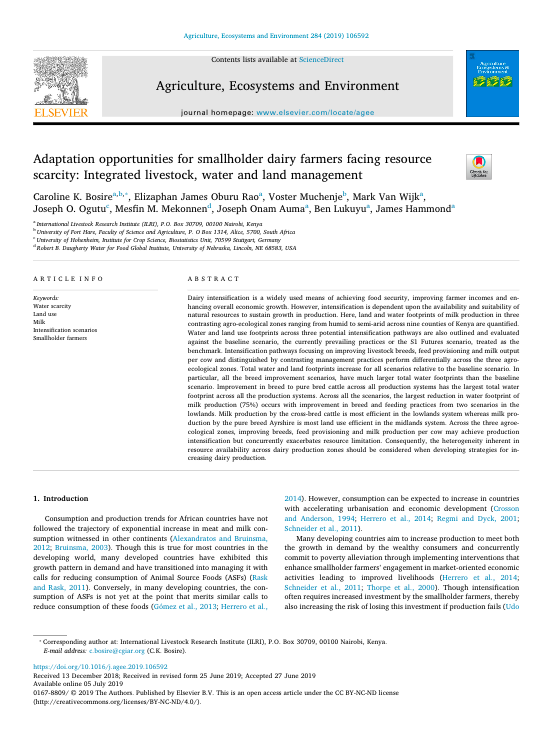Adaptation opportunities for smallholder dairy farmers facing resource scarcity: Integrated livestock, water and land management

ABSTRACT
Dairy intensification is a widely used means of achieving food security, improving farmer incomes and enhancing overall economic growth. However, intensification is dependent upon the availability and suitability of natural resources to sustain growth in production. Here, land and water footprints of milk production in three contrasting agro-ecological zones ranging from humid to semi-arid across nine counties of Kenya are quantified. Water and land use footprints across three potential intensification pathways are also outlined and evaluated against the baseline scenario, the currently prevailing practices or the S1 Futures scenario, treated as the benchmark. Intensification pathways focusing on improving livestock breeds, feed provisioning and milk output per cow and distinguished by contrasting management practices perform differentially across the three agro-ecological zones. Total water and land footprints increase for all scenarios relative to the baseline scenario. In particular, all the breed improvement scenarios, have much larger total water footprints than the baseline scenario. Improvement in breed to pure bred cattle across all production systems has the largest total water footprint across all the production systems. Across all the scenarios, the largest reduction in water footprint of milk production (75%) occurs with improvement in breed and feeding practices from two scenarios in the lowlands. Milk production by the cross-bred cattle is most efficient in the lowlands system whereas milk production by the pure breed Ayrshire is most land use efficient in the midlands system. Across the three agroecological zones, improving breeds, feed provisioning and milk production per cow may achieve production intensification but concurrently exacerbates resource limitation. Consequently, the heterogeneity inherent in resource availability across dairy production zones should be considered when developing strategies for increasing dairy production.